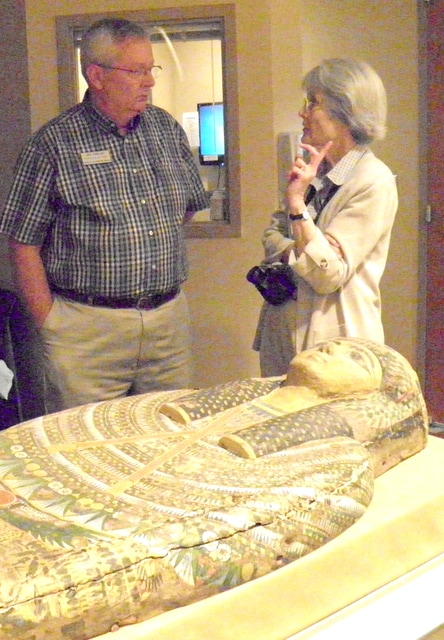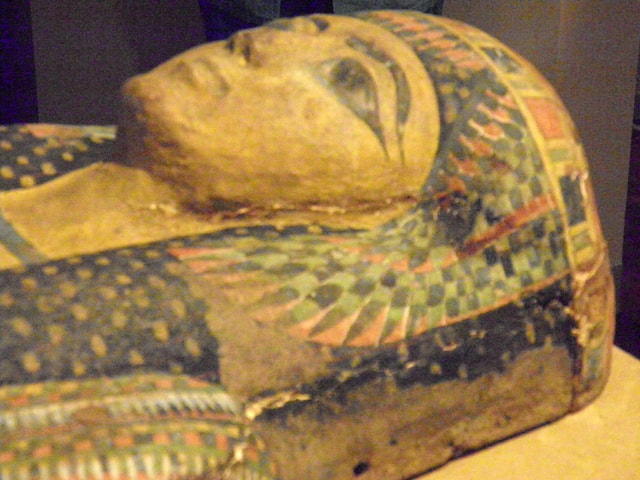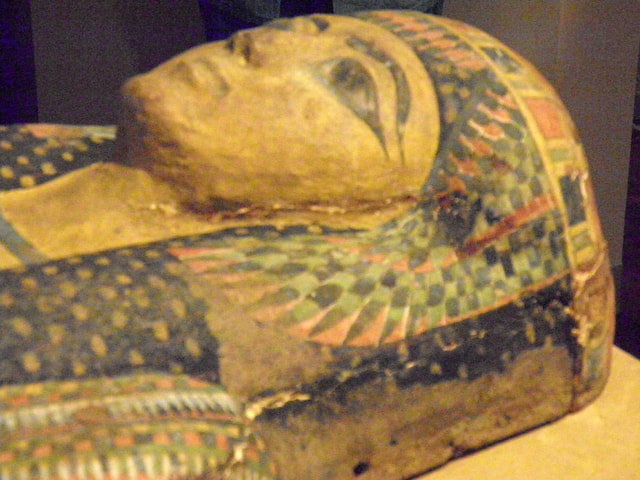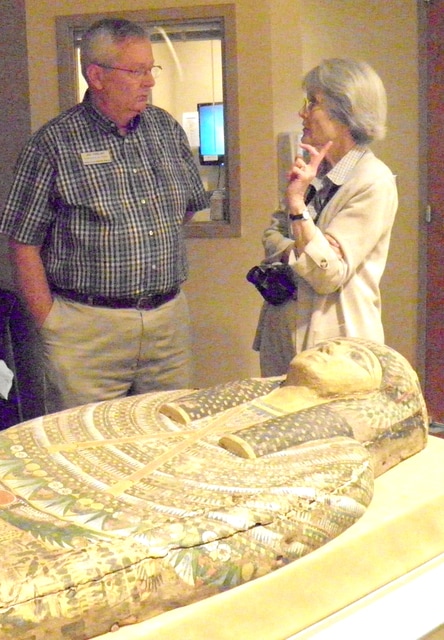



RICHMOND, Ind. — Wayne County Historical Museum staff and volunteers came to Reid Health recently seeking answers to questions about the lid to the coffin of the Egyptian mummy in the museum’s collection. The mummy has been to Reid twice previously.
It was x-rayed in 1974 and CT scanned in 2000, but this was the first time the lid has been outside the museum.
“We are interested in seeing if there is any metal work in the lid,” said Bonnie Sampsell, guest curator of the Egyptian collections at the museum.
The coffins were put together with dowels, so the presence of metal would indicate that the lid has been repaired since it was made in about 900 B.C.
Sampsell is a retired professor of biology and has expanded her studies to Egyptology in the last 23 years. She is preparing a monograph on the museum’s mummy that will explain the mummy’s importance to the study of ancient Egypt.
Museum staff know the coffin was made for a woman due to the female features on the lid. Previous radiograph tests revealed the mummy’s skull and pelvic bones were that of a male. At some point the body of the female was removed and a male was placed in the coffin. This is believed to have been common practice for non-royal burials. Coffins were expensive to make and were sometimes emptied and recycled. The fact that the coffin cover was not changed to a male figure is indicative of a less expensive funeral. Other indications that the museum’s mummy was from a cost-conscience funeral is that the brain was not removed and the body was not fully preserved as all soft tissue has deteriorated.
“Normally, the name of the deceased appears on the footplate of the coffin,” explained Eugene Cruze-Uribe, professor of history at Indiana University East. “When the male body was placed in the coffin the original name was painted over and left blank.”
The museum recently held a contest with local children to vote on a name for the mummy. Children voted for their favorite from a list of eight names. The winner was Menkaef, which means, “his soul remains.”
Sampsell is also intrigued by the designs on the lid. The upper half of the body is painted in a very conventional old style of Egyptian motifs while the lower appears more recent.
Preliminary reviews of Thursday’s x-rays revealed a minimal amount of modern repair — in the last 200 years or so — have been made to the lid of the coffin. Samples of paint and wood will be evaluated to determine age and the type of wood used.
The mummy was a gift to the museum from Julia Gaar, who purchased it from an antiquities shop in Cairo, Egypt in 1929.
“The mummy sat in our museum for 75 years without any interpretation. Everybody knew we had a mummy, but nobody really knew anything about it,” said James Harlan, executive director of the museum.
Harlan is appreciative of the cooperation from Reid Health in examining the mummy and the coffin lid.
“We are pleased to continue to learn more about Menkaef so we can share that information with the public in our display,” added Harlan.






